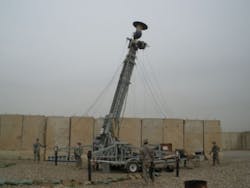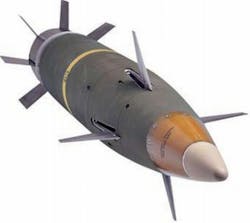Satellite-guided heavy artillery shell able to detect and attack moving targets to be produced by Raytheon
Although the M982 is perhaps the longest-range artillery ammunition in the U.S. arsenal, it has the ability to be fired nearly straight up from positions in cities or hilly terrain and engage its precision-guidance system at high altitudes, and detect and attack moving targets -- even individual vehicles -- with an accuracy of better than 65 feet from the desired aim point.
The shells are guided by global positioning system (GPS) satellite navigation and inertial measurement unit, and can be fired from the M109A6 Paladin self-propelled howitzer, as well as from the M198 and M777A2 towed howitzers.
Excalibur first was fielded in Iraq in 2007 for urban or complex-terrain engagements in which collateral damage must be kept to a minimum. The munition is designed to be fired at a high-angle and change its flight path to hit its target.
Raytheon will do the work in Tucson, Ariz.; McAlester, Okla.; Farmington, N.M.; Niceville, Fla.; Healdsburg, Calif.; Anniston, Ala.; Cincinnati, Ohio; Anaheim, Calif.; Williamsport, Pa.; Joplin, Mo.; Lowell, Mass.; Karlskoga, Sweden; and in the United Kingdom, and should be finished by early 2013.
For more information contact Raytheon Missiles Systems online at www.raytheon.com/businesses/rms, the Army Contracting Command at www.army.mil, or Picatinny Arsenal at www.pica.army.mil.

